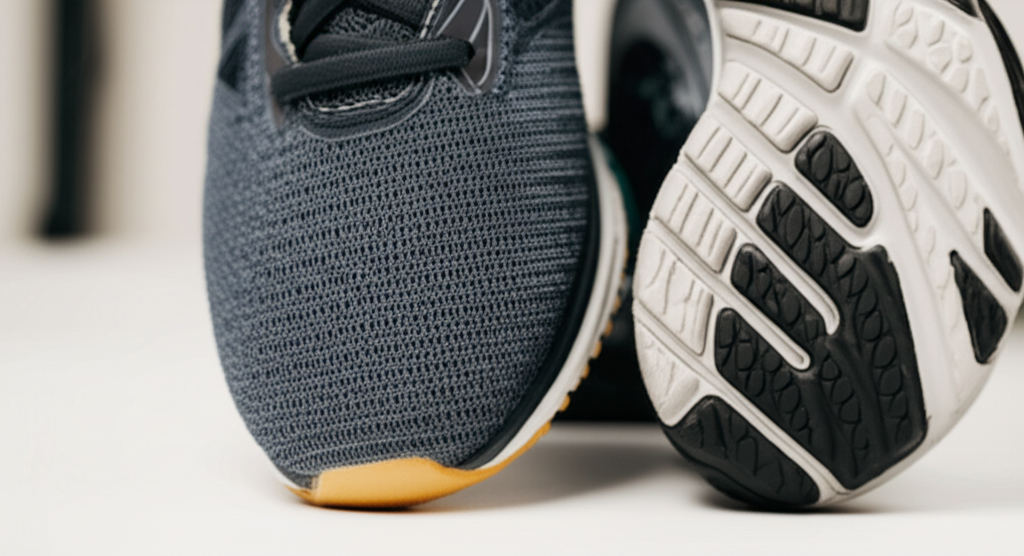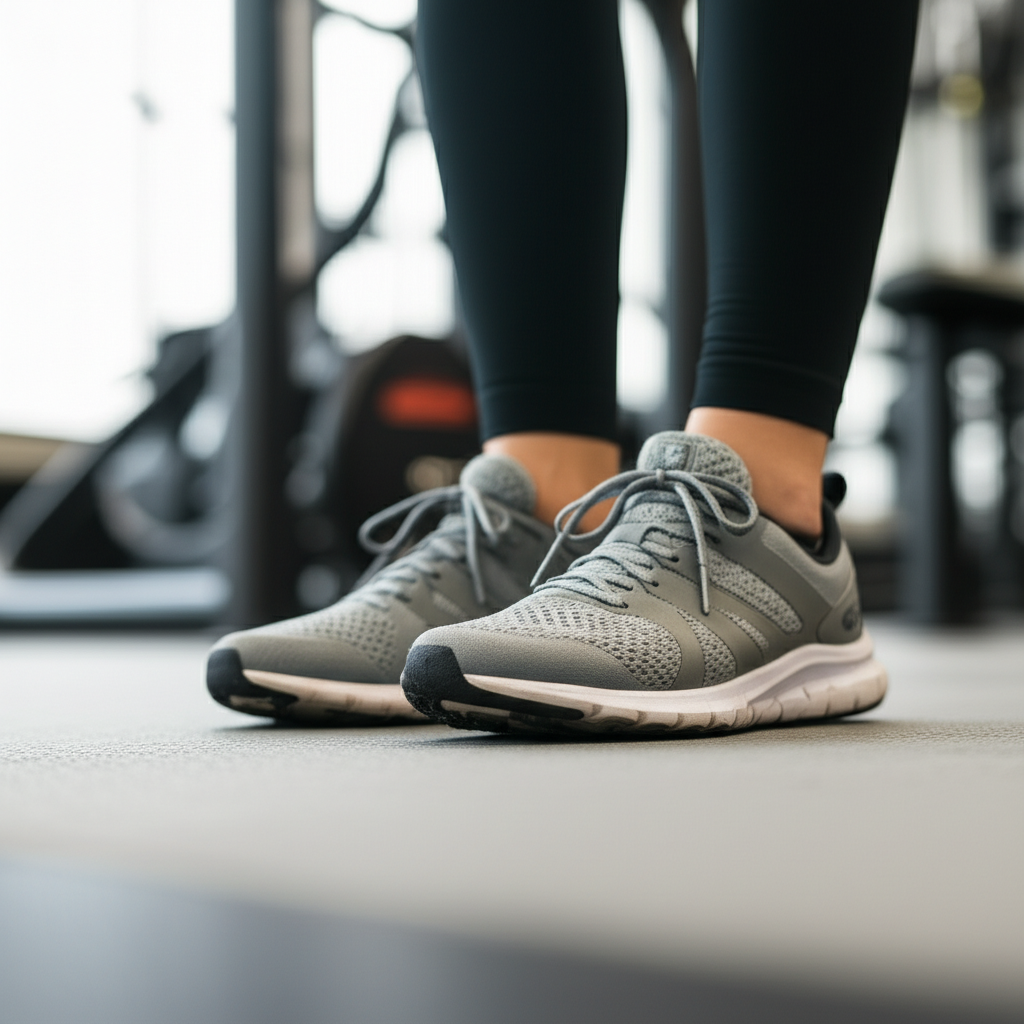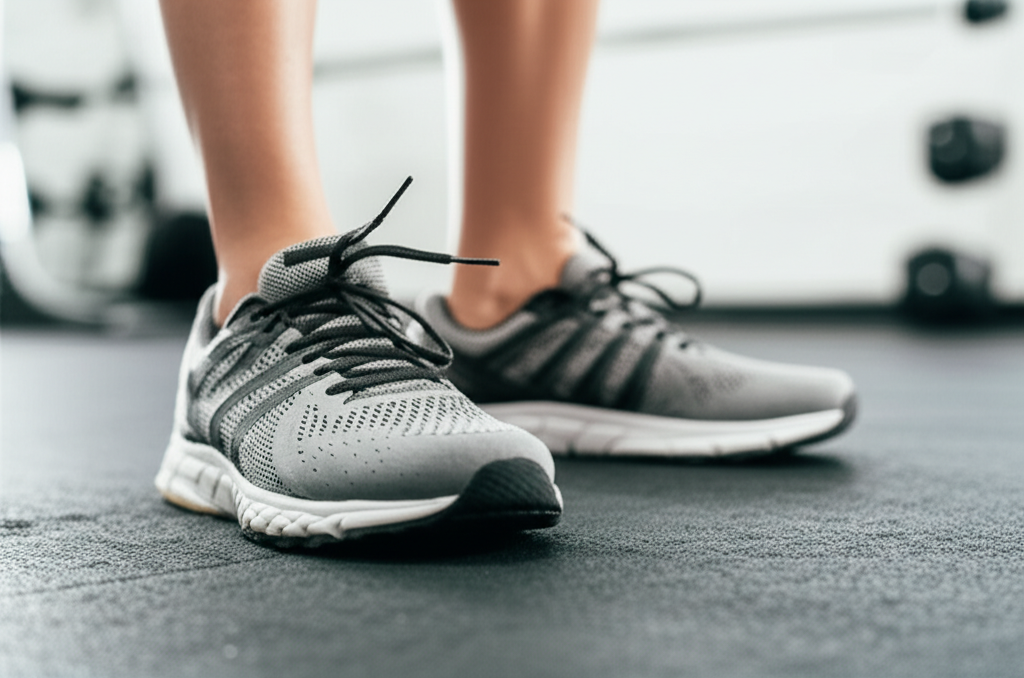Yes, you can technically wear walking shoes to the gym, but they are not ideal for most gym activities. While they offer comfort for walking, gym shoes provide better support and stability for diverse workouts like weightlifting and cardio. Choosing the right shoe ensures safety and performance.
Key Takeaways
- Walking shoes are comfortable for everyday wear.
- Gym shoes offer specific support for varied exercises.
- Avoid walking shoes for intense gym training.
- Consider shoe features for different gym activities.
- Invest in appropriate footwear for better gym results.
- Proper shoes prevent injuries and enhance performance.
Can Walking Shoes Be Used For Gym? Uncover The Truth
You’ve decided to hit the gym, which is fantastic! But as you get ready, you might wonder about your footwear. Can those comfortable walking shoes you love also be your gym companions? It’s a common question, and the answer isn’t a simple yes or no. The truth is, while you can wear them, they might not be the best choice for every gym session. Different activities demand different types of support. Let’s break down the differences between walking shoes and gym shoes, so you can make the most informed decision for your workouts and keep your feet happy and healthy. Understanding this can make a big difference in your gym experience and help prevent common injuries.
Understanding Your Footwear Needs: Walking vs. Gym

The first step to understanding if walking shoes can go to the gym is to know what each type of shoe is designed for. Think of it like using the right tool for the job. A hammer is great for nails, but not so much for painting. Similarly, shoes are specialized.
What Are Walking Shoes Designed For?
Walking shoes are engineered with comfort and support for one primary activity: walking. They typically feature:
- Cushioning: Ample cushioning to absorb shock from repetitive impact during walking.
- Flexibility: A more flexible sole that bends easily with your foot as you stride.
- Arch Support: Moderate arch support to keep your foot comfortable over longer distances.
- Breathability: Often made with mesh uppers for good airflow.
- Tread: A sole designed for grip on various surfaces like sidewalks and trails.
Their goal is to provide a comfortable, stable platform for moving forward at a consistent pace. They are excellent for your daily strolls, errands, or even light hiking.
What Are Gym Shoes Designed For?
Gym shoes, often referred to as cross-training shoes or athletic shoes, are built for a wider range of movements and activities commonly found in a gym setting. This includes:
- Lateral Support: Stronger support on the sides of the shoe to handle side-to-side movements, jumps, and quick changes in direction.
- Stability: A more stable base, especially in the heel, for lifting weights and maintaining balance.
- Durability: Built to withstand more intense wear and tear from various exercises.
- Traction: Outsoles designed for grip on indoor gym surfaces, often with multi-directional patterns.
- Versatile Cushioning: A balance of cushioning for impact and responsiveness for power.
Gym shoes are essentially multi-taskers, designed to accommodate the dynamic nature of gym workouts. This versatility is key, as a gym session might involve cardio machines, weight training, group fitness classes, and more, all in one visit.
Can You Wear Walking Shoes to the Gym? The Pros and Cons
Now, let’s get to the heart of the matter. Can your trusty walking shoes tag along to your gym sessions? Here’s a look at the potential benefits and drawbacks:
Potential Benefits of Using Walking Shoes at the Gym
- Comfort for Certain Activities: If your gym routine primarily consists of walking on a treadmill or light, steady-state cardio, your walking shoes might feel perfectly fine. The cushioning can be pleasant.
- Familiarity: You’re already used to how they feel, so there’s no adjustment period needed.
- Cost-Effective: If you already own a good pair of walking shoes, you might think you don’t need to buy another pair of specialized gym shoes right away.
Potential Drawbacks of Using Walking Shoes at the Gym
This is where things get more important. The limitations of walking shoes become apparent when you introduce activities beyond simple forward motion:
- Lack of Lateral Support: This is a major concern. Many gym exercises, like lunges, burpees, or any agility drills, involve side-to-side movements. Walking shoes are not built for this and can lead to ankle rolls or other injuries.
- Insufficient Stability for Lifting: When you’re lifting weights, especially heavier ones, you need a stable base. The flexible sole and softer heel of a walking shoe can make you feel wobbly and compromise your form, increasing the risk of injury. According to the Mayo Clinic, proper footwear is crucial for preventing injuries during exercise.
- Reduced Traction for Certain Movements: While good for sidewalks, the tread on walking shoes might not offer the best grip for quick stops or explosive movements on gym floors.
- Wear and Tear: Gym workouts are often more intense than a typical walk. Using walking shoes for these activities can wear them out faster than intended.
- Compromised Performance: Even if you don’t get injured, the lack of specific support can hinder your performance. You might not be able to push as hard or as safely.
So, while you can technically wear them, the risks and limitations often outweigh the benefits for a well-rounded gym routine.
When Walking Shoes Might Be Okay (and When to Avoid Them)

Let’s define the scenarios more clearly. Your walking shoes can accompany you to the gym under specific circumstances, but it’s crucial to know when they are simply not the right tool.
Scenarios Where Walking Shoes Might Be Acceptable
- Treadmill Walking/Light Jogging: If your gym session is exclusively dedicated to walking or very light jogging on a treadmill, your walking shoes will likely suffice. The motion is similar to what they are designed for.
- Warm-up/Cool-down: For the initial few minutes of light cardio or stretching as part of your warm-up or cool-down, walking shoes are generally fine.
- Very Casual Gym Visits: If you’re just starting out, attending a gentle stretching class, or not engaging in any high-impact or multi-directional movements, they might get you by initially.
Scenarios Where You Absolutely Should NOT Use Walking Shoes
These are the situations where specialized gym shoes are non-negotiable for safety and effectiveness:
- Weightlifting: Squats, deadlifts, overhead presses, and even bench presses require a stable base. Walking shoes are too soft and flexible.
- High-Intensity Interval Training (HIIT): HIIT workouts involve explosive movements, jumps, and quick changes in direction, all of which demand superior lateral support.
- Cross-Training Classes: Classes like circuit training, boot camps, or functional fitness often combine cardio, strength, and agility exercises.
- Court Sports (if played at the gym): If your gym has courts for basketball or tennis, walking shoes are entirely unsuitable due to the extreme lateral movements.
- Running on Treadmill for Extended Periods or at High Speeds: While walking shoes are okay for casual walking, dedicated runners often prefer running shoes with specific cushioning and support tailored for the biomechanics of running. For longer or faster treadmill sessions, running shoes are better.
The key takeaway is that any activity involving lateral movement, instability, or significant force generation is a red flag for using walking shoes.
Choosing the Right Gym Shoes: What to Look For
If your gym routine calls for more than just walking, investing in a pair of dedicated gym shoes is a wise decision. Here’s what to consider:
Types of Gym Shoes
The world of athletic footwear can seem vast, but for general gym use, you’re typically looking at a few main categories:
- Cross-Training Shoes: These are the most versatile for the average gym-goer. They offer a good balance of cushioning, stability, and lateral support for a variety of workouts.
- Running Shoes: If your primary gym activity is running (especially on a treadmill or outdoors), dedicated running shoes are best. They are designed for forward motion and shock absorption.
- Weightlifting Shoes: For serious weightlifters, these shoes have a raised, firm heel to improve squat depth and stability for lifts. They are not suitable for cardio or general training.
For most beginners who do a mix of cardio, strength training, and perhaps a class, cross-training shoes are usually the most appropriate choice.
Key Features to Prioritize
When you’re shopping for gym shoes, keep these features in mind:
| Feature | What to Look For | Why It Matters for Gym Use |
|---|---|---|
| Sole Flexibility | Should bend easily in the forefoot but be firm in the midfoot and heel. | Allows for natural foot movement during cardio while providing stability for lifts. |
| Heel Counter | A firm, structured heel cup that cups your heel securely. | Prevents heel slippage and provides stability during squats and jumps. |
| Lateral Support | Reinforced sides, a wider base, and a snug fit around the midfoot. | Crucial for preventing ankle injuries during side-to-side movements and quick changes of direction. |
| Cushioning | Balanced cushioning – not too soft, not too hard. Enough to absorb impact but responsive enough for power. | Protects joints during cardio and jumping, but doesn’t create instability during lifting. |
| Traction | Durable rubber outsole with a multi-directional tread pattern. | Ensures a secure grip on gym floors during various movements. |
| Breathability | Uppers made of mesh or breathable synthetic materials. | Keeps your feet cool and comfortable during intense workouts. |
A good starting point is to visit a reputable athletic shoe store. They can analyze your gait and recommend shoes based on your foot type and intended activities. Organizations like the American Podiatric Medical Association (APMA) provide resources on foot health and shoe selection, emphasizing the importance of proper fit and function for various activities.
Pro Tip: Try on gym shoes at the end of the day when your feet are slightly swollen. This ensures a comfortable fit even during longer or more intense workouts.
How Different Gym Activities Impact Shoe Choice
The best shoe for you depends heavily on what you actually do at the gym. Let’s break it down:
Cardio Machines (Treadmill, Elliptical, Bike)
For activities primarily involving forward motion and repetitive impact, like walking or jogging on a treadmill or using an elliptical, cushioning and flexibility are key. Walking shoes can often suffice here, but dedicated running shoes offer superior shock absorption and responsiveness for longer or faster sessions.
Weight Training (Lifting Weights)
When lifting, especially compound movements like squats, deadlifts, and lunges, stability is paramount. You need a shoe with a firm, flat sole that doesn’t compress easily. This provides a solid foundation for power transfer and balance. Running shoes and especially walking shoes are generally too soft and flexible, which can be dangerous.
HIIT and Circuit Training
These workouts are the most demanding on footwear because they combine elements of cardio, plyometrics (jumping), and agility. You need a shoe that offers a good blend of:
- Lateral Support: For side shuffles, burpees, and quick direction changes.
- Cushioning: To absorb the impact of jumps.
- Stability: For brief moments of holding a pose or during strength components.
- Flexibility: To allow for natural foot movement.
Cross-training shoes are typically the best bet here.
Group Fitness Classes (Zumba, Aerobics, Yoga)
The shoe requirements vary by class. For dance-based classes like Zumba or high-impact aerobics, shoes with good lateral support and cushioning are essential. For low-impact classes like yoga or Pilates, you might even go barefoot or wear specialized grip socks for better traction and connection to the mat. If a class involves varied movements, a versatile cross-trainer is a safe choice.
The Long-Term Benefits of Wearing the Right Shoes
It might seem like a small detail, but wearing the correct shoes for your gym activities offers significant long-term advantages:
- Injury Prevention: This is the most crucial benefit. Proper support and stability reduce the risk of sprains, strains, and chronic issues like plantar fasciitis or shin splints. The Occupational Safety and Health Administration (OSHA) highlights the importance of appropriate footwear in preventing workplace injuries, a principle that extends to recreational activities like gym workouts.
- Improved Performance: When your feet are properly supported, you can generate more power, move with more confidence, and maintain better form, leading to more effective workouts.
- Enhanced Comfort: Properly fitted and designed shoes make your workouts more enjoyable, reducing foot fatigue and pain.
- Increased Longevity of Footwear: Using shoes for their intended purpose helps them last longer, giving you better value for your money.
- Better Posture and Alignment: The right shoes can contribute to better overall body alignment, which can positively impact your posture and reduce strain on other joints.
Think of your shoes as an investment in your health and fitness journey. They are the foundation for every movement you make.
Frequently Asked Questions (FAQ)
Q1: Can I wear my running shoes for weightlifting?
A1: While better than walking shoes, dedicated running shoes are still not ideal for serious weightlifting. Their soles are designed for cushioning and flexibility during forward motion, which can make them unstable for lifting. Weightlifting shoes or flat-soled cross-trainers are preferred for stability.
Q2: How often should I replace my gym shoes?
A2: This depends on the frequency and intensity of your workouts. Generally, aim to replace gym shoes every 6-12 months. Look for signs of wear like worn-out treads, compressed cushioning, or breakdown of the sole. For high-mileage runners, this timeframe might be shorter.
Q3: What’s the difference between gym shoes and cross-training shoes?
A3: “Gym shoes” is a broad term. Cross-training shoes are a specific type of gym shoe designed for versatility, offering a balance of support, cushioning, and stability for a variety of exercises. Other gym shoes might be more specialized, like running shoes or lifting shoes.
Q4: Can I wear my old walking shoes for the gym if I buy new ones for walking?
A4: Even if they are old, if your walking shoes are still in good condition, they might be okay for very light activities like treadmill walking. However, as they age, their cushioning and support degrade, making them less suitable for any gym activity. It’s always best to have a dedicated pair for the gym.
Q5: My gym shoes feel a bit tight. Is that okay?
A5: No, gym shoes should not feel uncomfortably tight. They should fit snugly to provide support, but there should be a thumb’s width of space between your longest toe and the front of the shoe. Overly tight shoes can cause blisters, nerve issues, and restrict blood flow.
Q6: Do I need different shoes for cardio and weight training at the gym?
A6: For most beginners and intermediate gym-goers, a good pair of cross-training shoes will adequately serve both cardio and weight training needs. If you are very serious about one discipline (e.g., competitive weightlifting or marathon running), then specialized shoes for each would be beneficial, but for general fitness, versatility is key.
Conclusion
So, can walking shoes be used for the gym? The short answer is yes, but with significant caveats. While they might suffice for very basic gym activities like walking on a treadmill, they are generally not the ideal choice for the dynamic and varied movements common in most gym workouts. Their lack of lateral support and stability can increase the risk of injury, especially during weightlifting, HIIT, or agility training. Investing in a pair of dedicated gym shoes, such as versatile cross-trainers, is a proactive step towards ensuring your safety, comfort, and performance. By understanding the design and purpose of different athletic footwear, you empower yourself to make informed choices that support your fitness goals and protect your well-being. Your feet will thank you for it!

